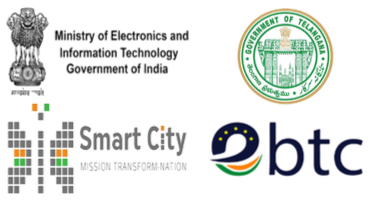
Living Lab is a major step to create an urban area enhancing three value domains: social, economic and environmental which leads to a livable area that will be a new urban centre in Hyderabad. The major areas focussed are around the air quality, water supply and quality, power consumption, Weather forecast , crowd monitoring and so on. Research has been planned in the above areas to address day to day and technology problems. In Course of time , the research generates wide range of datasets which can be utilized by researchers across the academia. .
Research Topics
The various researches being conducted presently in the living lab can be listed as follows:
- Power Distribution and consumption
- IoT interface using LoRaWAN (<1GHZ) to enable wide range reliable deployment with minimal infrastructure and low power consumption.
- Weather
- Dataset complements the energy data set and solar data set.
- Identifying and mapping of corridors of pathogens that cause health hazards/epidemics by correlating micro climatic & pollution data
- Pollution
- Denser deployment identifying pollution at minute level.
- Data analytical models for extrapolating the measurements at micro level and macro level.
- Smart spaces with smart climate control(classrooms)
- Enthalpy based control for energy saving
- Transactive Control for demand based on the generation from the PV, cost of electricity supplied by grid and ensuring that the contracting demand is not crossed.
- Short term prediction of loads.
- Fault detection and diagnostics in HVAC and building fabric.
- Digital twin(compare/create real model with respect to the virtual model. It can also be used for model predictive control.
- Solar
- Dataset consisting of sky images and solar energy generation.
- Datasets are used for predicting cloud movement.
- Fault identification and diagnostics based on the predicted energy(using sky images and weather inputs) and actual power generated.
- Water Distribution
- Understanding the water consumption for a defined area and population using water flow sensors and Leakage detection is also done by using the same data.
- Water saving by controlling the water supply as per the consumption requirement.
- Data set availability to understand the quality and quantity of water used in a defined area and population.
- Crowd Monitoring
- Computer vision algorithms To enable deployment of crowd enforcement authorities for crowd management.
- Computer vision algorithms to enforce safety guidelines like maintaining safe distance , wearing masks etc.
- Feasibility of the implementation of the above two points using drones and other appropriate sensors.
